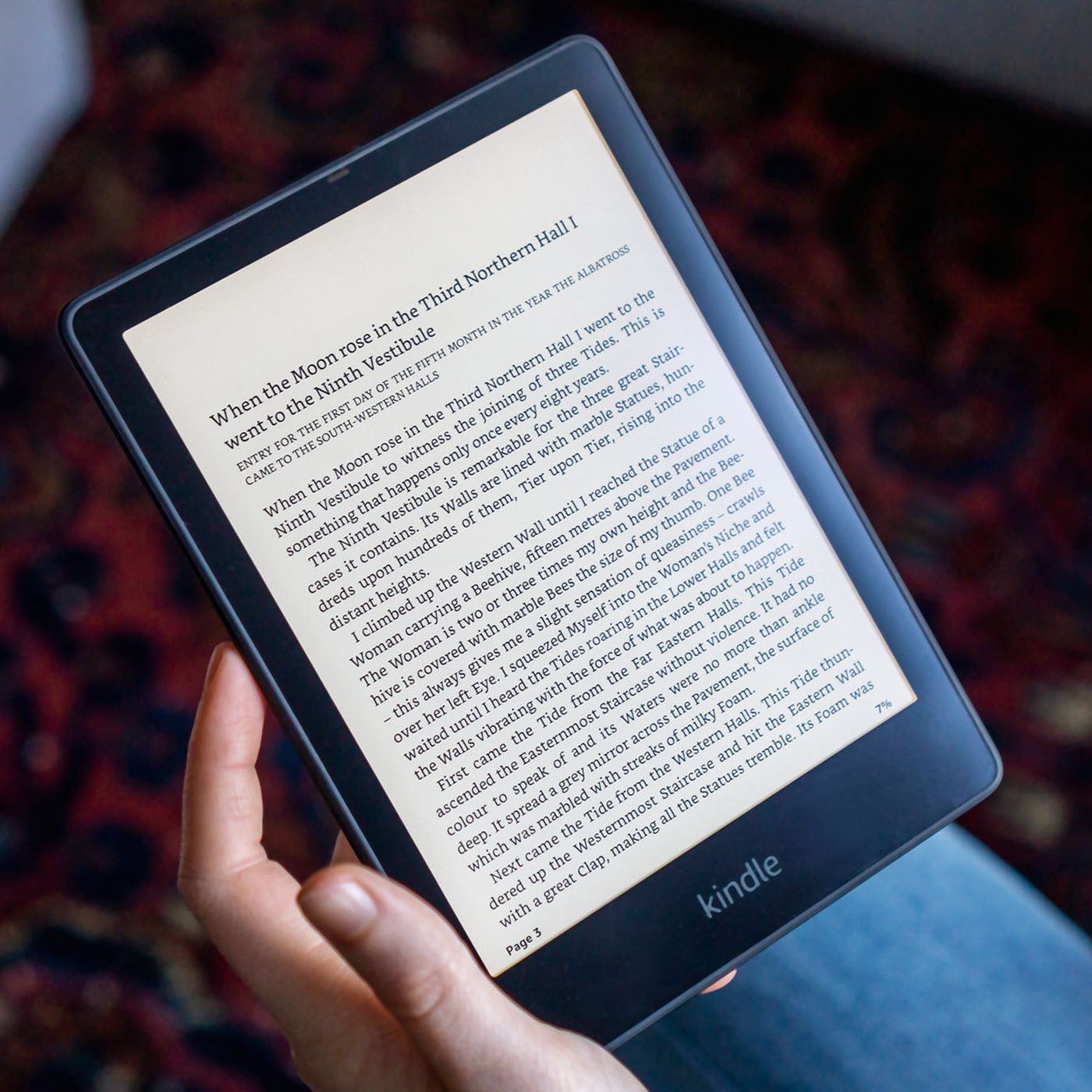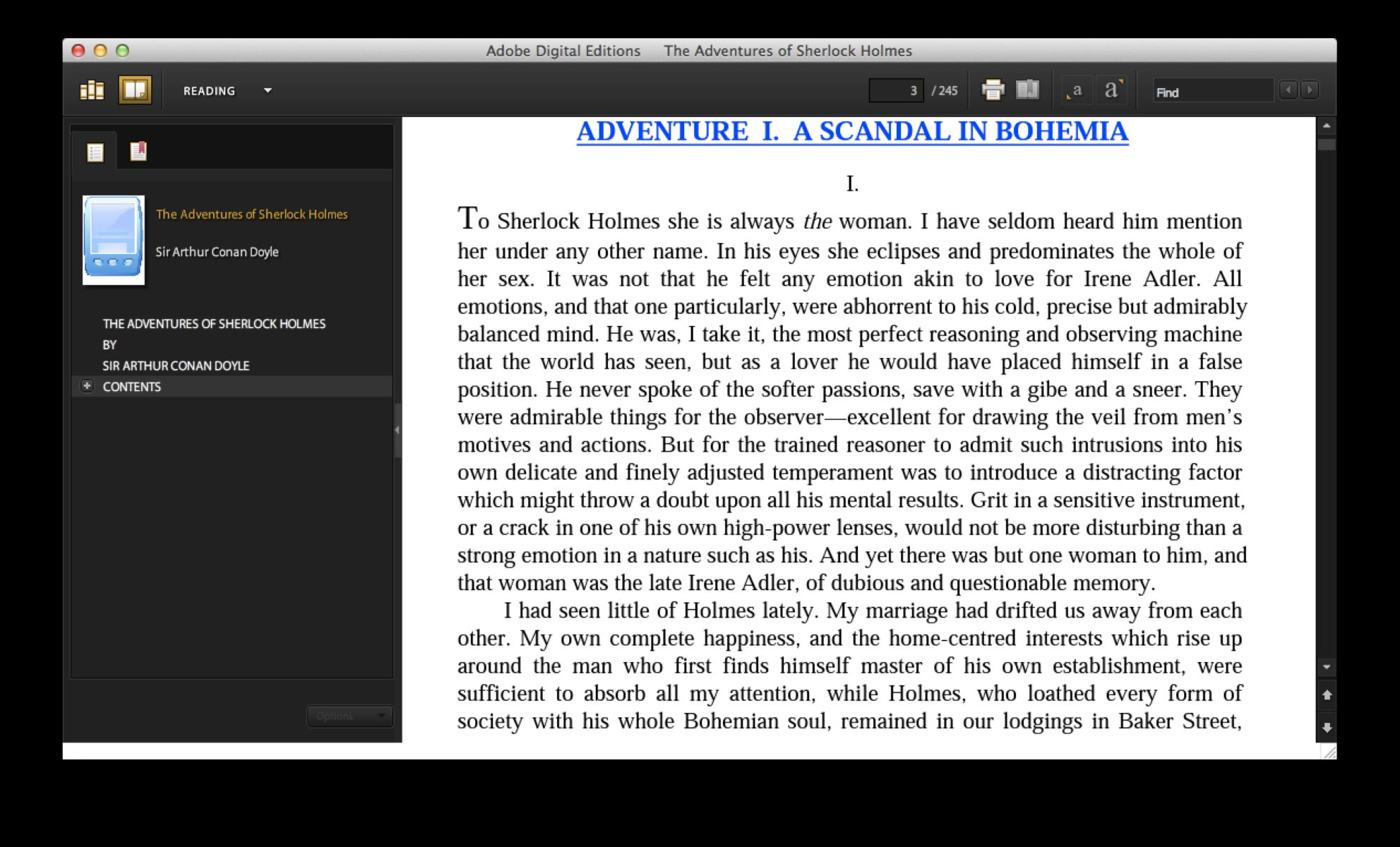Introduction
As the popularity of eBooks continues to rise, it’s important for authors and publishers to understand the optimal size for their digital publications. The size of an eBook refers to the dimensions and file size of the document, which can have a significant impact on the reading experience and accessibility across different devices. In this article, we will explore the factors to consider when determining the size of your eBook and discuss the differences between PDF and EPUB formats. Additionally, we will provide guidelines for image size and resolution, as well as tips for reducing the file size of your eBook.
With the vast array of eReaders, tablets, and smartphones available, ensuring your eBook is compatible with multiple devices is essential. Readers have different screen sizes and resolutions, and an eBook that is too large or too small may result in a subpar reading experience. By understanding and optimizing the size of your eBook, you can provide a seamless reading experience for your readers, regardless of the device they choose to use.
Moreover, eBook size affects more than just the reading experience. File size plays a critical role in the delivery and distribution of your eBook. Large file sizes can be burdensome for readers to download and store, which could discourage potential readers from accessing your content. On the other hand, smaller file sizes may limit the design elements and features you can include in your eBook, impacting the overall aesthetic and functionality.
To determine the ideal size for your eBook, you need to consider various factors, including the content of your book, the target audience, and the type of devices readers are likely to use. By taking these factors into account, you can design an eBook that not only looks great but also provides an enjoyable reading experience for your audience.
What is eBook Size?
eBook size refers to the dimensions and file size of a digital publication. The dimensions are determined by the width and height of the page, while the file size is the amount of storage space required to save the eBook. Both factors impact the reading experience and compatibility with various devices.
When it comes to dimensions, eBooks can have either a fixed layout or a reflowable layout. Fixed layout eBooks have a set page size similar to a physical book, which ensures that the content appears exactly as intended by the author. This format is often used for children’s books, comics, or books with complex layouts that require precise positioning of elements. Reflowable layout eBooks, on the other hand, adapt to the screen size and orientation of the reading device, allowing the text and images to flow smoothly. This format is commonly used for novels, textbooks, and other text-heavy publications.
File size plays a crucial role in the accessibility and delivery of an eBook. Large file sizes can slow down the downloading process and consume excessive storage space on the reader’s device, potentially discouraging them from engaging with the content. It is important to strike a balance between file size and quality to ensure a smooth reading experience.
Moreover, different eBook formats have varying file sizes. For instance, PDFs are typically larger in size due to their static nature, as they preserve the layout and formatting of the original document. This format is suitable for eBooks with complex designs or those intended for printing. On the other hand, EPUB files have smaller sizes as they are designed for reflowable layouts and can adapt to different screen sizes. EPUBs are widely supported by eReaders and mobile devices, making them a popular choice for digital publications.
Understanding eBook sizes and their impact is crucial for authors and publishers. By optimizing the dimensions and file size, you can ensure that your eBook can be comfortably read on various devices and accessed by a wide range of readers. In the following sections, we will explore the reasons why eBook size matters and the factors to consider when determining the ideal size for your digital publication.
Why Does eBook Size Matter?
The size of an eBook has a significant impact on the reading experience, accessibility, and distribution of the digital publication. Here are a few reasons why eBook size matters:
1. Reader Experience: The size of an eBook can affect how it appears and functions on different devices. If the file size is too large, it may take longer to download and consume more storage space, leading to a slower reading experience. On the other hand, if the eBook is too small, the text and images may appear too small or blurry on larger screens. Finding the right balance ensures that readers can enjoy your eBook without any hindrances.
2. Compatibility: With a wide range of eReaders, tablets, and smartphones available, ensuring your eBook is compatible with multiple devices is crucial. Different devices have varying screen sizes, resolutions, and supported file formats. Optimizing the size of your eBook allows it to be easily viewed and enjoyed on different platforms, enhancing its accessibility and reach.
3. Download Speed: Readers appreciate fast and efficient downloads. Large file sizes can slow down the downloading process, especially for readers with slow internet connections. By optimizing your eBook’s size, you can ensure faster downloads and a seamless reading experience from the very beginning.
4. Storage Space: eBooks that require a significant amount of storage may deter potential readers who have limited space on their devices. By reducing the file size without sacrificing quality, you can make your eBook more accessible to a wider audience, increasing the chances of engagement and readership.
5. Distribution and Upload Limitations: Some online platforms, such as eBook retailers or file-sharing websites, may have limitations on the maximum file size that can be uploaded or distributed. By considering the size requirements of these platforms, you can ensure that your eBook can be easily published and shared.
Overall, eBook size matters as it directly impacts the reader experience, compatibility, download speed, storage space, and distribution of your digital publication. By optimizing the size, you can provide a seamless reading experience, increase accessibility, and reach a wider audience. In the following sections, we will delve into the factors you should consider when determining the ideal size for your eBook.
Factors to consider when determining eBook size
When determining the size of your eBook, there are several factors that you should consider. These factors will help you optimize your eBook for readability, user experience, and compatibility. Here are the key factors to keep in mind:
1. Content Type: The type of content in your eBook plays a significant role in determining the ideal size. For text-heavy publications like novels or non-fiction books, a reflowable layout with a smaller file size, such as EPUB, is often recommended. However, if your eBook contains complex designs, images, or graphs, a fixed-layout format, like PDF, may be more suitable to preserve the layout and ensure the visual appeal of the content.
2. Device Compatibility: Your target audience’s preferred reading devices should guide your eBook size decisions. Consider the screen sizes, resolutions, and supported file formats of the devices your readers are likely to use. Ensuring compatibility across various devices will enhance the user experience and accessibility of your eBook.
3. Image Size and Resolution: Images greatly impact the size of your eBook. High-resolution images with larger file sizes can result in a significantly larger overall eBook size. It’s important to balance image quality with file size to maintain a seamless reading experience. Resize and compress images appropriately to optimize their size without compromising visual quality.
4. Multimedia Elements: If your eBook includes multimedia elements like videos, audio clips, or interactive features, the file size can increase significantly. Consider whether these elements are essential to the content and target audience. If necessary, compress and optimize the multimedia files to reduce the overall eBook size while retaining their functionality.
5. Reading Experience: A comfortable reading experience is essential for eBook success. Consider the font size and formatting options you want to offer your readers. Certain font styles and formatting choices may increase the file size. Strike a balance between aesthetics and readability to ensure a pleasurable reading experience on different devices.
6. File Formats: Different file formats have varying sizes. PDFs tend to have larger file sizes as they preserve the layout and formatting of the original document. EPUBs, on the other hand, are designed for reflowable layouts and can adapt to different screen sizes, resulting in smaller file sizes. Consider the advantages and limitations of each format in relation to your content and audience.
By considering these factors, you can determine the optimal size for your eBook. Remember to strike a balance between file size, content types, and user experience, ensuring your eBook is accessible, visually appealing, and compatible with various reading devices.
PDF vs. EPUB: Which format is best for your eBook?
When it comes to choosing the format for your eBook, the two most popular options are PDF and EPUB. Both formats have their own advantages and considerations to keep in mind. Let’s explore the differences between the two and help you decide which format is best for your eBook.
PDF (Portable Document Format):
- Advantages:
- Preserves the original layout and formatting of the document, ensuring consistency across devices.
- Supports complex designs, graphics, and images, making it ideal for visually rich content.
- Allows for precise control over page layout and formatting elements.
- Can be easily printed or shared while retaining the intended formatting.
- Considerations:
- Large file sizes can be a concern, especially for readers with limited storage space or slower internet connections.
- The fixed layout may not adapt well to different screen sizes, leading to potential readability issues on smaller devices.
- Not all eReaders and mobile devices support PDF format natively, requiring readers to use third-party applications or software.
EPUB (Electronic Publication):
- Advantages:
- Offers a reflowable layout that adapts to different screen sizes and orientations, providing a more versatile reading experience.
- Smaller file sizes make downloading and storage more efficient, particularly for readers with limited space or slower internet connections.
- Supported by a wide range of eReaders, tablets, and smartphones, ensuring greater accessibility for your eBook.
- Allows for text customization (font size, style, etc.) to accommodate different reader preferences.
- Considerations:
- Complex layouts, graphics, or designs may not be accurately preserved or displayed in the same way as in PDF format.
- Limited control over the precise positioning of elements, as the layout adapts dynamically depending on the device and user preferences.
- EPUB files require more careful formatting and attention to detail to ensure a consistent reading experience across devices.
Choosing between PDF and EPUB ultimately depends on the nature of your content, target audience, and the reading experience you want to provide. If your eBook requires precise layout and formatting, or contains complex designs and graphics, PDF may be the most suitable format. However, if you prioritize a reflowable layout that adapts to varying screen sizes and a wider audience reach, EPUB is a recommended option.
It’s worth noting that some authors and publishers choose to offer both formats to cater to different reader preferences and device compatibility. This way, readers can choose the format that best suits their device and preferences, ensuring a seamless reading experience.
Ideal Image Size and Resolution for eBooks
Images play a crucial role in enhancing the visual appeal and storytelling of your eBook. However, it’s important to optimize image size and resolution to achieve a balance between visual quality and file size. Here are some guidelines to help you determine the ideal image size and resolution for your eBooks:
1. Image Size: The size of your images should be proportionate to the dimensions of your eBook pages. Consider the layout and design of your eBook, and the placement of images within the text. Avoid using images that are too small, as they may appear pixelated when stretched to fit larger screens. On the other hand, using images that are too large can increase the file size unnecessarily, impacting the overall eBook performance and download time. Optimize image size by resizing them to fit within the desired layout and viewports of different devices.
2. Image Resolution: The resolution of an image refers to the level of detail and clarity. Higher resolution images are generally crisper and more detailed but also have larger file sizes. While there is no standard resolution requirement for eBooks, a resolution of 72 to 150 pixels per inch (PPI) is typically sufficient for digital reading devices. This resolution strikes a balance between image quality and file size. However, for high-density displays like those found in tablets and smartphones, you may consider using higher resolutions, such as 200 to 300 PPI, to ensure clear and sharp image renditions.
3. Compression Techniques: Compressing images can significantly reduce their file sizes without significant loss of visual quality. Use image editing software or online compression tools to optimize image file sizes while maintaining an acceptable level of resolution. Experiment with different compression settings to strike the right balance between file size reduction and image quality. However, exercise caution not to over-compress images, as it can lead to visible artifacts and degradation in image quality.
4. Image Format: Consider the appropriate image format for your eBook. Common image formats include JPEG, PNG, and GIF. JPEG is generally the most suitable format for photographs and complex images, as it offers a good balance between file size and image quality. PNG is better suited for simple images and graphics that require transparency. GIF is primarily used for animated images. Using the correct image format ensures optimal quality while keeping the file sizes in check.
5. Test and Preview: Before finalizing your eBook, it’s crucial to test and preview the images on different devices and screen sizes. This will help you ensure that the images appear as intended and do not hinder the reading experience. Pay attention to image scaling, alignment, and overall visual aesthetics during this testing phase.
By considering these factors and guidelines, you can optimize the image size and resolution in your eBook. Doing so will improve the visual appeal, maintain a reasonable file size, and provide an enjoyable reading experience for your audience across various devices.
Tips for Reducing eBook File Size
File size plays a crucial role in the accessibility and performance of your eBook. A large file size can slow down downloads, consume excessive storage space on devices, and make distribution more challenging. To optimize your eBook and reduce its file size, consider implementing the following tips:
1. Compress Images: Images often contribute significantly to the file size of an eBook. Use image editing software or online compression tools to reduce the size of images without sacrificing too much quality. Experiment with different compression settings to find the right balance between file size reduction and acceptable image quality.
2. Limit Image Resolution: Higher resolution images generally have larger file sizes. Evaluate the ideal resolution for your eBook, considering the target devices and the desired visual quality. Use resolution settings that are suitable for digital reading devices without unnecessarily inflating the file size.
3. Use Image Formats Wisely: Select the appropriate image format for different types of images within your eBook. For photographs and complex images, JPEG is generally more efficient in terms of file size. For images containing transparency or simple graphics, consider using PNG. Be mindful that using the wrong format may result in larger file sizes.
4. Optimize Fonts: Fonts can also contribute to the file size of an eBook. Use system fonts or web-safe fonts whenever possible, as opposed to embedding custom or decorative fonts. Subsetting fonts can also help reduce file size by including only the characters used in your eBook.
5. Minimize Metadata: Metadata such as author information, creation date, and publisher information can collectively increase the file size of your eBook. Review the metadata and remove any unnecessary or redundant information to reduce the ebook’s overall size.
6. Reduce Unused or Unnecessary Markup: Review your eBook’s markup, such as HTML or CSS, and remove any unused or unnecessary tags and styles. This can help minimize the size of the eBook file without compromising its structure or design.
7. Opt for Reflowable Layout: If feasible for your content, consider using a reflowable layout format like EPUB. Reflowable layouts adapt to different screen sizes and orientations, resulting in smaller file sizes compared to fixed-layout formats like PDF.
8. Avoid Excessive Embedded Multimedia: Multimedia elements such as videos, audio clips, or interactive features can significantly increase the file size of an eBook. Assess the necessity of embedded multimedia and consider alternative methods, such as linking to external media or providing supplementary content separately.
9. Test and Optimize: After implementing changes to reduce the file size, thoroughly test your eBook on various devices and platforms. Ensure that the reduction in file size does not negatively impact the readability, functionality, or overall user experience of the eBook.
By implementing these tips, you can significantly reduce the file size of your eBook without compromising its quality or readability. An optimized file size allows for easier distribution, faster downloads, and a more enjoyable reading experience for your audience.
Best Practices for eBook Design and Layout
Design and layout are crucial factors in creating an engaging and visually appealing eBook. A well-designed eBook enhances the reading experience, improves accessibility, and grabs the attention of your audience. Here are some best practices to consider when designing and laying out your eBook:
1. Maintain Consistency: Consistency in design elements, such as typography, colors, and spacing, helps create a cohesive and professional look throughout your eBook. Use a consistent font family, font size, and line spacing to ensure readability and visual harmony across all pages.
2. Consider Readability: Choose fonts that are easy to read on various devices and screen sizes. Sans-serif fonts, such as Arial or Verdana, are generally more legible on eReaders and mobile devices. Avoid using decorative or overly stylized fonts that may hinder readability.
3. Use Hierarchy and Formatting: Apply hierarchy and formatting to your text to guide the reader’s attention and create structure. Use headers, subheaders, and body text formatting consistently to organize content and make it easier to navigate. Incorporate bullet points and numbered lists to break up information and enhance readability.
4. Optimize Images and Graphics: Ensure that images and graphics are clear, high-quality, and relevant to your content. Compress images to reduce file size without sacrificing visual quality. Adjust image placement and sizing to avoid disrupting the flow of the text and maintain a visually balanced layout.
5. Consider Typography: Pay attention to typographic details, such as kerning (the space between letters), leading (the space between lines), and alignment. Properly formatted typography improves legibility and enhances the overall aesthetic appeal of your eBook.
6. Include Visual Breaks: Incorporate visual breaks in your eBook to improve the reader’s experience. Add chapter headers, section dividers, or decorative elements to separate content and make it visually engaging. Visual breaks help improve readability and prevent readers from feeling overwhelmed by large blocks of text.
7. Test on Different Devices: Preview and test your eBook on various devices and screen sizes to ensure that your design and layout adapt well. This will help you identify any formatting issues or inconsistencies that may arise on different devices. Make adjustments as needed to provide a seamless reading experience for your audience.
8. Consider Accessibility: Keep accessibility in mind when designing your eBook. Ensure that the font size is adjustable to accommodate readers with visual impairments. Provide alternative text descriptions for images to make the content accessible to visually impaired readers using screen readers.
9. Maintain File Size Optimization: While design and layout are important, also keep file size optimization in mind. Compress images, remove unnecessary media, and optimize your eBook to ensure it loads quickly and can be easily downloaded on different devices.
By following these best practices, you can create a visually appealing and optimized eBook that provides an enjoyable reading experience for your audience. Remember to balance design elements with readability and functionality to create a well-rounded eBook design and layout.
Conclusion
Optimizing the size, design, and layout of your eBook is essential for providing a seamless reading experience, increasing accessibility, and engaging your audience. By considering factors such as content type, device compatibility, image size and resolution, and file format, you can determine the ideal size for your eBook.
Choosing between the PDF and EPUB formats depends on your content, audience, and desired reading experience. PDFs are best suited for preserving complex designs and layouts, while EPUBs offer reflowable layouts that adapt to different screen sizes and orientations.
When it comes to images, striking the right balance between size and resolution is crucial. Compressing images, limiting resolutions, and using appropriate image formats can help reduce file size without compromising visual quality.
Additionally, following best practices for eBook design and layout, such as maintaining consistency, ensuring readability, optimizing typography, and testing on different devices, will enhance the overall aesthetics and user experience of your eBook.
Remember to keep file size optimization in mind throughout the process. Compressing images, removing unnecessary media, and considering accessibility will help ensure your eBook loads quickly and can be easily accessed by a wide range of readers.
By implementing these strategies and guidelines, you can create a well-crafted and optimized eBook that captivates readers, supports various devices, and provides a seamless reading experience.

























